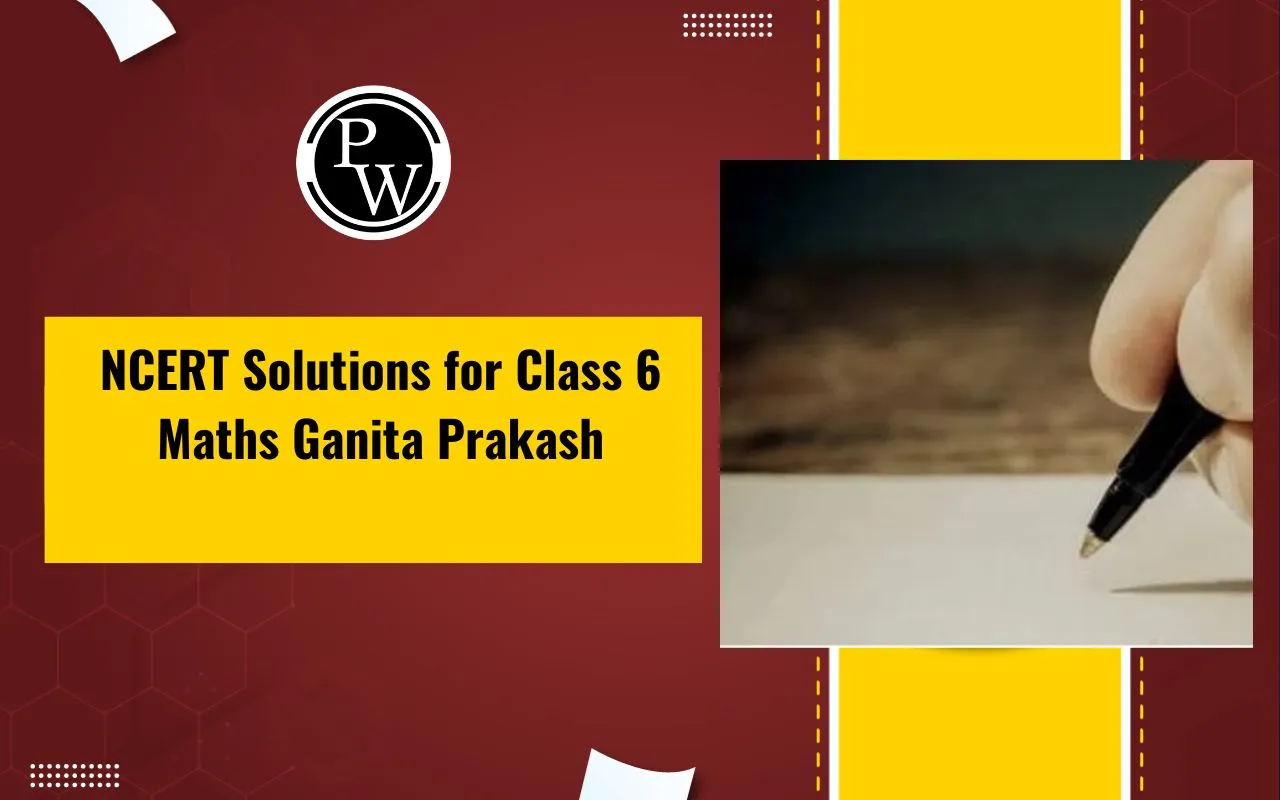

NCERT Solutions for Class 6 Science Chapter 10
NCERT Solutions for Class 6 Science Chapter 10: NCERT Solutions for Class 6 Science Chapter 10 Motion and Measurement of Distances help with CBSE Class 6 exam preparation. These solutions assist in understanding important topics for future studies. To score well, students should thoroughly study the answers. A good grasp of this chapter also aids in higher-class chapters. The solutions are provided by subject experts and are very accurate. Each question is explained simply for better student understanding. These solutions can be used as a reference.NCERT Solutions for Class 6 Science Chapter 10 PDF Download
NCERT Solutions for Class 6 Science Chapter 10 Overview
Class 6 students need not worry about Science Chapter 10 as NCERT Solutions Class 6 Science Chapter 10 Motion and Measurement of Distances are explained concisely. A pointwise explanation in PDF format is available on the PhysicsWallah website. Experts in the field prepare NCERT Solutions Class 6 Science Book, making study simple and interesting. Students can download the PDF for convenient exam preparation. PhysicsWallah also offers NCERT Solutions for Class 6 Maths to help revise the complete syllabus and score higher marks in exams.
NCERT Solutions for Class 6 Science Chapter 1
NCERT Solutions for Class 6 Science Chapter 10 Motion and Measurement of Distances
The NCERT Solutions for Class 6 Science Chapter 10 cover various topics, including modes of transport, measurement, SI units, the concept of metre, straight-line motion, rectilinear motion, circular motion, and periodic motion. Detailed answers to all exercise questions in the NCERT textbook are included to help clear doubts. 1. Give two examples each, of modes of transport used on land, water and air. Solution: Land – Train, Bus Water – Ship, Boat Air – Helicopter, Aeroplane 2. Fill in the blanks: (i) One metre is ______________ cm. (ii) Five kilometres is ______________ m. (iii) Motion of a child on a swing is ______________. (iv) Motion of the needle of a sewing machine is ______________. (v) Motion of the wheel of a bicycle is______________. Solution: (i) One metre is 100 cm. (ii) Five kilometres is 5000 m. (iii) Motion of a child on a swing is periodic. (iv) Motion of the needle of a sewing machine is periodic . (v) Motion of the wheel of a bicycle is circular . 3. Why can a pace or a footstep not be used as a standard unit of length? Solution: Pace or a footstep cannot be used as a standard unit of length because it varies from person to person.NCERT Solutions for Class 6 Science Chapter 2
4. Arrange the following lengths in their increasing magnitude: 1 metre, 1 kilometre, 1 centimetre, 1 millimetre. Solution: 1 millimetre, 1 centimetre, 1 metre, 1 kilometre 5. The height of a person is 1.65 m. Express it into cm and mm. Solution: 1.65= 165 cm = 1650 mm 6. The distance between Radha’s home and her school is 3250 m. Express this distance in km. Solution: 1 km = 1000 m Hence, 3250 m = 3.25 kms 7. While measuring the length of a knitting needle, the reading of the scale at one end is 3.0 cm and at the other end is 33.1 cm. What is the length of the needle? Solution: Length of needle = 33.1 – 3 = 30.1 cm 8. Write the similarities and differences between the motion of a bicycle and a ceiling fan that has been switched on. Solution: Similarities – The blades of a fan and the wheels of a bicycle show circular motion Differences – Bicycles move in rectilinear motion, but the fan does not move in rectilinear motion.NCERT Solutions For Class 6 Science Chapter 12
9. Why would you not like to use a measuring tape made of an elastic material like rubber to measure distance? What would be some of the problems you would meet in telling someone about a distance you measured with such a tape? Solution: An elastic measuring-tape will not give accurate measurements as it stretches in length and reduces in size when stretched. When we express measurements taken with elastic tape, we have to tell whether the tape was stretched. If yes, how much? Hence, it is very difficult to tell the measurement taken from an elastic tape. 10. Give two examples of periodic motion. Solution: a) A needle of a sewing machine b) PendulumNCERT Solutions for Class 6 Science Chapter 3
NCERT Solutions for Class 6 Science Chapter 10 Topic-Wise Discussion
Here’s a detailed topic-wise discussion on NCERT Solutions for Class 6 Science Chapter 10 Motion and Measurement of Distances: 10.1 Story of Transport In the early days, people faced challenges with getting around because they didn't have any vehicles. They relied on walking for travel. The introduction of wheels marked a significant change in transportation. Wheels enabled them to cover longer distances in less time, allowing for increased productivity. On water, wheels were not practical, so people discovered that wooden planks could float. They began crafting boats from these planks to travel on water. Later, motors were added to enhance the speed of these wheel-driven transports. The evolution of transportation is explained in detail in NCERT solutions for Class 6 Science Chapter 10.NCERT Solutions for Class 6 Science Chapter 8
10.2 How Far have you Travelled? How Wide is this Desk? NCERT solutions in Class 6 Science Chapter 10 emphasise the importance of understanding distance. Before embarking on a journey, it's essential to determine the distance to be covered. Short distances can be walked, while longer distances require a car. Measuring distance involves expressing it in terms of length, similar to measuring the width of a desk. Tools like Gilli and danda, strings, or rulers are used for this purpose. For longer distances, larger scales are employed. Another method involves multiplying the wheel's circumference by the number of rotations needed to cover the entire distance. Further details on measuring distance can be found in NCERT Class 6 Science Chapter 10. 10.3 Some Measurements Measurement is a way to compare something we don't know with things we know. This comparison has two parts - a number and a unit. Different things have set units used all around the world, and these units stay the same for everyone. To learn more about measurements in Motion and Measurement of Distances Class 6, you can get the NCERT solutions for Class 6th Science Chapter 10 PDF from the PhysicsWallah website.NCERT Solutions For Class 6 Science Chapter 9
10.4 Standard Units of Measurement Standard units of measurement are the same worldwide, though some places might have their own units. In ancient India, people used their fingers to measure short distances, but now we use metres universally for length. Other things, like weight (gram), temperature (degrees), and pressure (Pascals), also have specific units. You can find a complete list of these measurement units in NCERT solutions for Class 6 Science Chapter 10. Standard measures are those measures that are consistent worldwide.- The International System of Units was adopted during the 12th general conference on weight and measures in October 1960. It aims to establish consistency globally and is known as "The System International Units."
- The standard unit for measuring length is the metre.
- A metre is divided into 100 equal parts known as centimetres. Furthermore, one centimetre comprises ten equal divisions, referred to as millimetres. Therefore,
- 1 millimetre = 100 centimetres
- 1 centimetre = 10 millimetres
- Kilometre is a unit used for measuring large distances where a metre is not practical. It provides a larger scale for measuring long distances.
- 1 kilometre = 1000 metres.
NCERT Solutions for Class 6 Science Chapter 14
10.5 Accurate Measurement of Length Length is commonly measured using metres. Smaller lengths are measured in centimetres, while kilometres and miles are used for larger lengths. To measure length correctly, follow the guidance in NCERT solutions for Class 6th Science Chapter 10. Utilise a ruler for measurement, ensuring it is positioned correctly in front of your eye. Align the 0 marks with the object's end. If the ruler's ends are damaged, and the 0 mark is flawed, you can start measuring from any marked point. To determine the object's accurate length, subtract your starting point from the final reading. Refer to the detailed step-by-step protocol in NCERT solutions for Class 6 Science Chapter 10.NCERT Solutions for Class 6 Science Chapter 5
10.6 Measuring the Length of a Curved Line Sometimes, an object may not have a straight edge but a curved or differently shaped side. For measuring the exact length of a curved line, consult NCERT Class 6 Science Chapter 10 solutions. Use a string for this purpose. Place the string along the curve, mark the starting and endpoint on the string, and then measure the length between these points with a ruler. The detailed process is explained in NCERT solutions for Class 6 Science Chapter 10, Motion and Measurement of Distances. 10.7 Objects in Motion and at Rest When you observe your surroundings, you'll notice various things either staying still or moving. For instance, a table remains still, while a fly moves. You can create a list of different items and observe whether they are stationary or in motion. So, motion can be described as a change in the position of an object. For further insights, refer to the study materials in NCERT Class 6 Science Chapter 10. Access the PDF version for Motion and Measurement of Distances Class 6. 10.8 Various Forms of Motion In Chapter 10 of Class 6 Science, different forms of motion are explained. Everyday objects demonstrate these motions. For instance, a train moves in a straight line, soldiers march uniformly, a ceiling fan rotates in a circle, swings oscillate, and musical instruments vibrate. The NCERT solution for Class 6 Science Chapter 10 provides a clear explanation of these motions. You can download the Motion and Measurement of Distances Class 6 PDF from the PhysicsWallah website.NCERT Solutions For Class 6 Science Chapter 4
Benefits of NCERT Solutions for Class 6 Science Chapter 10
The National Council of Educational Research and Training (NCERT) is an autonomous organisation in India that publishes textbooks and educational resources for school students. NCERT solutions for Class 6 Science Chapter 10, like other chapters, are designed to provide a comprehensive and effective learning experience. Here are some benefits associated with using NCERT solutions for Class 6 Science Chapter 10: 1. Aligned with Curriculum: NCERT solutions are specifically designed to align with the curriculum prescribed by educational boards. This ensures that students receive information that is relevant and directly related to their academic syllabus. 2. Clear and Concise Content: The solutions provided in NCERT textbooks are known for their clarity and conciseness. Complex scientific concepts are explained in a simple and easy-to-understand language, making it accessible to students at the Class 6 level. 3. Thorough Understanding: NCERT solutions aim to facilitate a deep understanding of the subject matter. Each solution is crafted to cover the fundamental concepts of the chapter, helping students build a strong foundation in science.NCERT Solutions For Class 6 Science Chapter 6
4. Well-Structured Format: NCERT solutions are organised in a systematic and well-structured format. The content is presented in a logical sequence, making it easier for students to follow and grasp the concepts step by step. 5. Illustrations and Diagrams: Science often involves visual concepts, and NCERT solutions incorporate illustrations, diagrams, and charts to enhance the learning experience. Visual aids help in better comprehension and retention of information. 6. Problem-Solving Skills: The solutions often include examples and exercises that encourage students to apply the concepts learned. This helps in developing problem-solving skills, a crucial aspect of scientific learning. 7. Exam Preparation: NCERT solutions are valuable resources for exam preparation. They provide a comprehensive coverage of the topics included in the syllabus, helping students prepare for examinations more effectively. 8. Consistency Across States: Since NCERT is a national body, its textbooks and solutions ensure consistency in education across different states and regions. This is particularly beneficial for students who may move from one place to another. 9. Enhanced Critical Thinking: The solutions are designed to encourage critical thinking and analytical skills. The questions posed in the exercises often require students to think beyond rote memorization and apply their understanding to solve problems.NCERT Solutions for Class 6 Science Chapter 11
How to Prepare With NCERT Solutions for Class 6 Science Chapter 10?
To prepare for Class 6 Science Chapter 10 using NCERT solutions, you can follow these steps: Step 1: Acquire the Necessary Materials Make sure you have the required materials before you start preparing:- NCERT Class 6 Science Textbook: Ensure you have the latest edition of the textbook.
- Class 6 Science NCERT Solutions: You can find these solutions in various formats, including books, online platforms, or apps.
NCERT Solutions For Class 6 Science Chapter 15
Step 2: Understand the Chapter's Objectives Before diving into the details, understand the objectives of Chapter 10. For Class 6 Science, Chapter 10 is usually related to topics like "Motion and Measurement of Distances." Step 3: Read the Chapter Thoroughly Start by reading the chapter thoroughly. Understand the concepts, definitions, and key points. Take notes if needed. Step 4: Solve Textbook Exercises After reading the chapter, solve the exercises given at the end of the chapter in the textbook. This will help you reinforce what you've learned.NCERT Solutions For Class 6 Science Chapter 7
Step 5: Use NCERT Solutions Once you've attempted the exercises, refer to the NCERT solutions. These solutions provide step-by-step explanations for each question, helping you understand the correct approach to solve problems. Step 6: Clarify Doubts If you encounter any difficulties, don't hesitate to ask your teachers, classmates, or use online platforms for clarification. Understanding the concepts thoroughly is crucial for better retention. Step 7: Practise Additional Questions To reinforce your understanding, practise additional questions related to the chapter. You can find extra questions in various guides or online resources.NCERT Solutions for Class 6 Science Chapter 10
Step 8: Make Conceptual Maps or Notes Create conceptual maps or notes summarising the key concepts of the chapter. This will be helpful for quick revisions closer to exams. Step 9: Revise Regularly Consistent revision is essential for better retention. Schedule regular revision sessions to keep the information fresh in your mind. Step 10: Seek Feedback Share your solutions with your teachers or peers and seek feedback. Constructive criticism can help you identify areas where you need improvement. Step 11: Test Yourself Take self-assessment quizzes or mock tests related to Chapter 10. This will help you gauge your understanding and identify weak areas that require more attention.NCERT Solutions For Class 6 Science Chapter 16
Step 12: Stay Consistent Consistency is key. Regular and focused study sessions are more effective than last-minute cramming. Step 13: Explore Beyond the Textbook While NCERT solutions are excellent for grasping the basics, don't hesitate to explore beyond the textbook. Additional references can provide a broader perspective on the topics covered.NCERT Solutions for Class 6 Science Chapter 10 FAQs
What are the Different Types of Motion?
What are the Units of Length?
What is a measurement of distance?
What is motion in Chapter 10 of Class 6 Science?
What is measurement?










